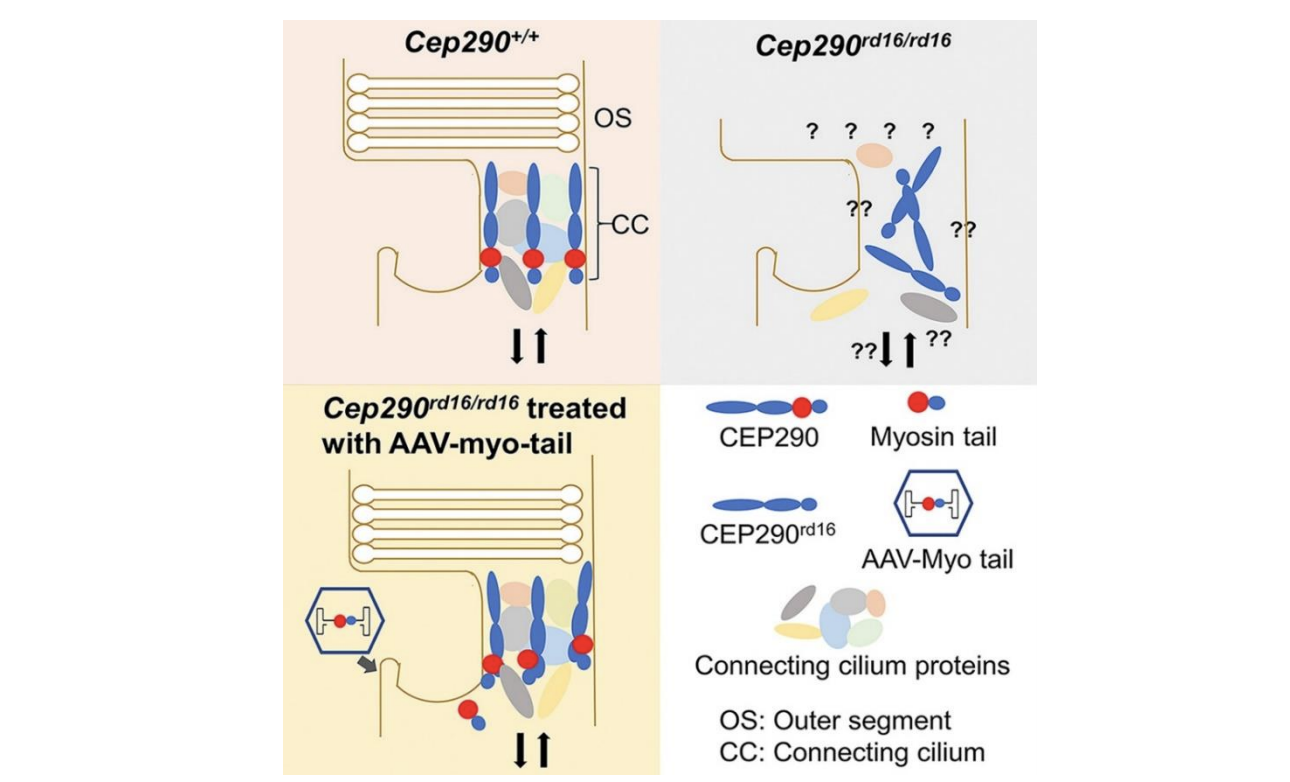
CEP290 plays an important role in the development, maturation, and normal functioning of cilium, a cellular organelle involved in multiple biological processes, including motility, sensory perception, and signaling. Mutations in the Centrosomal Protein 290 (CEP290) gene can lead to defects in cilia formation and function, leading to among other phenotypes, early onset retinal degeneration like Leber congenital amaurosis (LCA).
Technology: NEI investigators have developed an AAV-CEP 290 construct that expresses a portion of CEP 290 protein, which when administered in the eye, expresses in the photoreceptors to increase visual function in individuals suffering from CEP 290- related LCA.
Competitive Advantage: Previous attempts at treating CEP290-related LCA by gene therapy have been unsuccessful because of difficulty in delivering the full length CEP290 gene with a single vector. The present invention is of an AAV construct with a truncated portion of the CEP290 coding region that expresses functional protein to the photoreceptors.

Top Left: Schematic representation of mouse CEP290 protein in the AAV construct. Top Right: Light-adapted b-wave of ERG response from myo-tail or null vector injected eyes of Cep290rd16/rd16;Nrl-/ . Middle Left: Representative images of transmission electron microscopy showing relatively normal connecting cilium structure with myo-tail vector treatment. Middle Right: Optomotor response from Cep290rd16/rd16;Nrl-/-mice at 2 months after vector injection. Bottom Left: Dark- and light-adapted ERG responses from Cep290rd16/rd16 mice at 1 and 2 months after treatment. Bottom right: Representative confocal images of rhodopsin and rod-PDE staining of retinal sections from treated mice at 1 month after vector injection
A CEP290 C-Terminal Domain Complements the Mutant CEP290 of Rd16 Mice In Trans and Rescues Retinal Degeneration. Wu Z et al. Cell Rep. 2018 Oct 16;25(3):611-623.e6
Intellectual Property: OTT Reference No. E- 164-2014 is available for collaboration and licensing